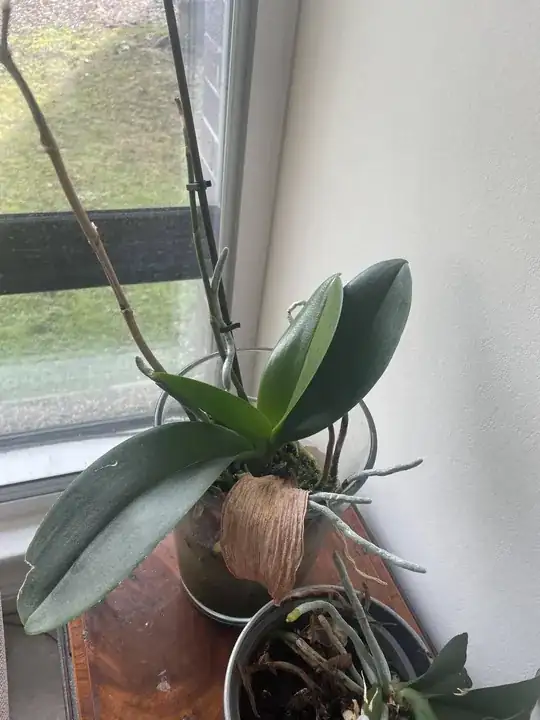I adopted this plant (see image below), but I don't know the name or how to care for it. I live in Dublin with limited sunlight but I have the plant by the window to give it the most amount of direct and indirect sunlight. Can someone please help me identify the plant and if possible, share any tips on how to care for it.
-
1You have an orchid, but I think it's nearly impossible to tell which species without it being in bloom. They're typically understory plants, so I'd move it out of direct sunlight as soon as possible. – Jurp Nov 07 '22 at 13:14
-
Thanks for that feedback, I'll it away from direct sunlight. Any suggestions on how to care for it? Watering cycle, etc? – cobih Nov 08 '22 at 11:09
3 Answers
I'm no expert but have successfully kept an orchid like this growing for several years in a similar climate (NW England).
- Keep out of direct sunlight as mentioned by Jurp in the comments. Ours have been fine on an East facing window sill except for the hottest part of summer where we move to a bookshelf inside the room.
- Water every week or two. I put 6 drops or so of concentrated orchid food in half a litre of water, hold the pot over a tub, pour over the water, and repeat with the recovered water. These orchids are usually potted in bark so they don't retain a lot of water and the water doesn't soak through like with compost. The multiple passes help ensure everything gets moist. Don't leave it in standing water.
- Repot when too many roots are poking out the bottom or top. Use special orchid compost, often made of bark and bits of dry clay (other types may work too - you seem to have moss). Trim excessive roots. It's different from repotting in normal compost but not difficult: put some bark in the bottom, sit the orchid roots on top with a suitably sized stick to support any future stalks, gently shake or prod more compost into the gaps to support and fill.
- Trim dead leaves and stalks to neaten up its appearance.
- Support the flower stalk against the stick with a clip. Not always clear which one the flowers will come from until the buds appear but there's no rush. Just be sure to do it before the flowers get too heavy.
Unsure about periods of rest but I assume they benefit from reduced watering and light at some point during the year. Also unsure about dealing with broken roots but I would suggest not watering until they've had time to scab over (to avoid rot).
- 161
- 3
-
Thanks for all these tips, I've been leaving it in standing water, I will change that. I'll also go to the plant store to find some orchid food. One last question; any tips on how to find which stalk will bloom a flow and which are just regular non-blooming stalk? I'm not sure which one to support and which one to leave as is – cobih Nov 08 '22 at 13:38
-
I'm not convinced that even the plant knows that until it's time :-) Eventually one gets buds and you'll know. On the same plant I've had last year's stalk put out a new shoot and flower but I've also seen the old stalks die off and a brand new flowering stalk appear. I've managed so far by just letting the orchid do its thing when it's ready. – Carl Nov 08 '22 at 14:00
-
I believe the shoots with the white skin are roots (looking for moisture in the air just as much as nearby moss or bark). The dark green ones are the ones that might bear flowers. – Carl Nov 08 '22 at 14:02
-
Looks very much like a Phaelenopsis orchid.
See the old flower stems? Count from the base two buds, and cut above those buds.
The big killer is rot from overwatering. I have killed a few. Like @Carl says, don't leave standing in water.
- 1,845
- 1
- 6
- 20
-
Thanks for that, that's helpful in knowing clear next steps in bringing this orchid back to health – cobih Dec 09 '22 at 16:36
this is a Phalaenopsis Orchid. It is a hardy plant, just keep away from direct sunlight.
From the image, it looks like you have kept them in a glass with some bit of water / moist soil, is that correct? We would recommend using clay balls. Phalaenopsis Orchids like their soil media to be very airy, and less moist. Also, do put them in a container that has large holes for the roots to come out. Orchids in general like their roots to be fully exposed to air.
- 1
- 2
